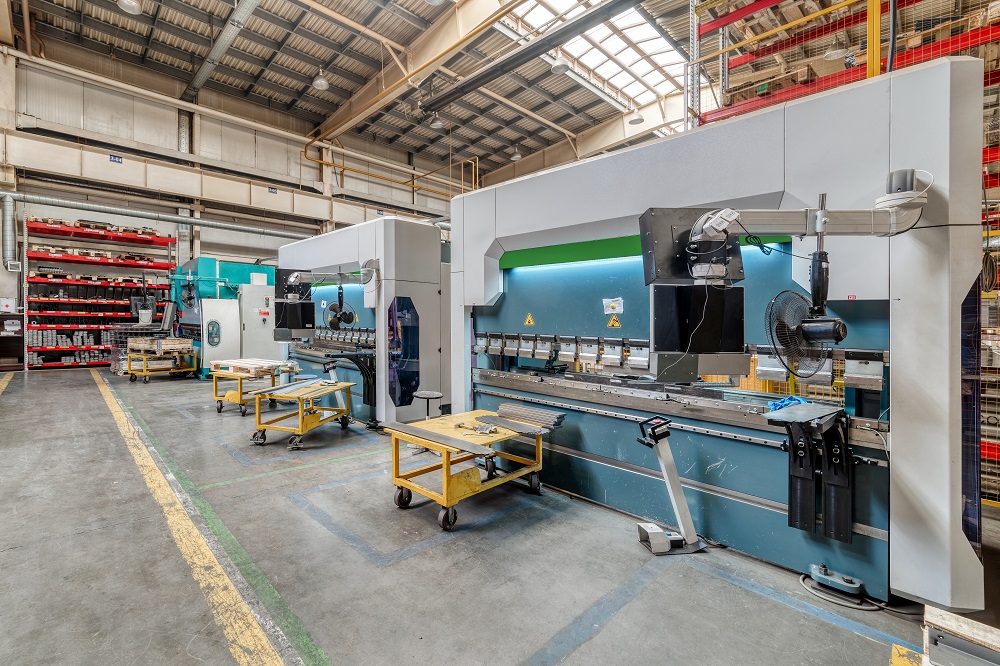In May 2020, manufacturing output increased by 3.8 percent as factories reopened after government-mandated shutdowns due to COVID-19. As they begin ramping up production, they have new challenges to contend with, including increased safety and sanitation guidelines issued by the Centers for Disease Control (CDC) and other state and local health authorities.
These new requirements may make it difficult to return to pre-pandemic production levels, as many shops are still implementing measures such as split shifts and social distancing to keep their workers safe. Fewer employees on the floor and possibly fewer production hours mean that it’s now more important than ever to identify opportunities to become more efficient.
Where to Find Inefficiencies
Productivity improvements on the shop floor require taking a look at three major components: tooling, preventative maintenance, and staffing. Through opportunities within these three areas, metalworking shops can start finding efficiencies that can help boost output and productivity.
Running Tooling at the Right Speeds
Metalworking shops may only be achieving 50 percent machine utilization – and a big part of that could be because the tooling isn’t being run at its full potential. In an environment where every last bit of productivity needs to be amplified to stay competitive, frequent tooling changes due to avoidable wear and tear is something that’s relatively easy to fix.
Today’s tooling is hardier and more advanced, and running it at slower speeds can damage the tooling or wear it down faster, which is a negative hit to efficiency. It’s important to check the manufacturer specifications for tooling and run it at the appropriate parameters, which helps improve machine performance – and by extension, productivity.
Conducting Regular Maintenance
Metalworking operations can grind to a halt when a machine unexpectedly breaks down – but regular maintenance helps prevent a shutdown. Typically, machine maintenance varies between manufacturers. Each will have specific instructions for how to perform preventative maintenance and how often it’s needed. And in some cases, shops may have smart machines that can self-diagnose and alert operators to potential problems before they happen, or shut down before the machine can damage itself or cause injury to employees.
The average manufacturing facility will spend a cumulative 19 hours each week on scheduled maintenance – a worthwhile investment to prevent downtime and keep production running smoothly. The manufacturers of the machines will provide suggested timelines, but it’s also important to regularly check tooling and machinery for wear. For example, if an operator notices that the machine isn’t producing the same results as normal, it may be time to service the machine, regardless of the maintenance schedule.
Reconfiguring Workflows and Shop Floors
When parts have to travel longer distances on the shop floor to be finished, or employees aren’t grouped together logically, metalworking shops can lose valuable time and productivity. Companies can combine high production machining centers and automation to create more efficient parts workflows. In cellular manufacturing, a machine can be set up to run one or multiple types of parts from the same family. Then, the machines can be arranged within work cells, which are production units on the shop floor that are clearly defined and grouped together to minimize the amount of movement.
In some cases, reconfiguring the shop floor and moving capital equipment may be required to set up a work cell. However, it’s important to weigh the benefits and drawbacks. In a high production environment, this type of restructuring can be useful. But, it can also require additional employee training.
How Coolant Can Boost Productivity
One way that metalworking shops can improve efficiency quickly is by using the right coolant. Coolant has a big impact on productivity; it can affect the life of the tooling, surface finish and machine performance. If the proper coolant isn’t being used, it can lead to tool failure, corrosion, and machine downtime.
Choosing the right coolant can also result in cost savings, not just from the coolant itself, but from minimizing downtime due to changing out the coolant, replacing broken tooling, or issues that affect employees like skin irritation. Our research has found that, while coolant typically amounts to only half a percent of the overall costs in a metalworking shop, it touches almost every aspect of the metalworking process: machinery, tooling, materials, and employees.
When selecting coolant, it’s not only important to look at the materials being machined, but also the different applications and the tooling being used. For example, aerospace applications have highly specific requirements that must be met, and many aerospace manufacturers require pre-approved formulations.
Coolant must also be properly maintained to achieve long sump life and avoid frequent shutdowns. Checking the concentration, removing tramp oil, and using the proper filtration can all contribute to a longer coolant life.
Finding Improvements in a Post-Pandemic World
The pandemic has changed how metalworking shops operate, which makes efficiency an imperative. That means looking at the shop floor as a whole and evaluating where bottlenecks occur and improper procedures or products are utilized. Correcting these issues will allow shops to operate at higher efficiency levels in challenging times.
For help optimizing your shop floor or choosing the right coolant, call +1 800-537-3365 or email us at [email protected].

